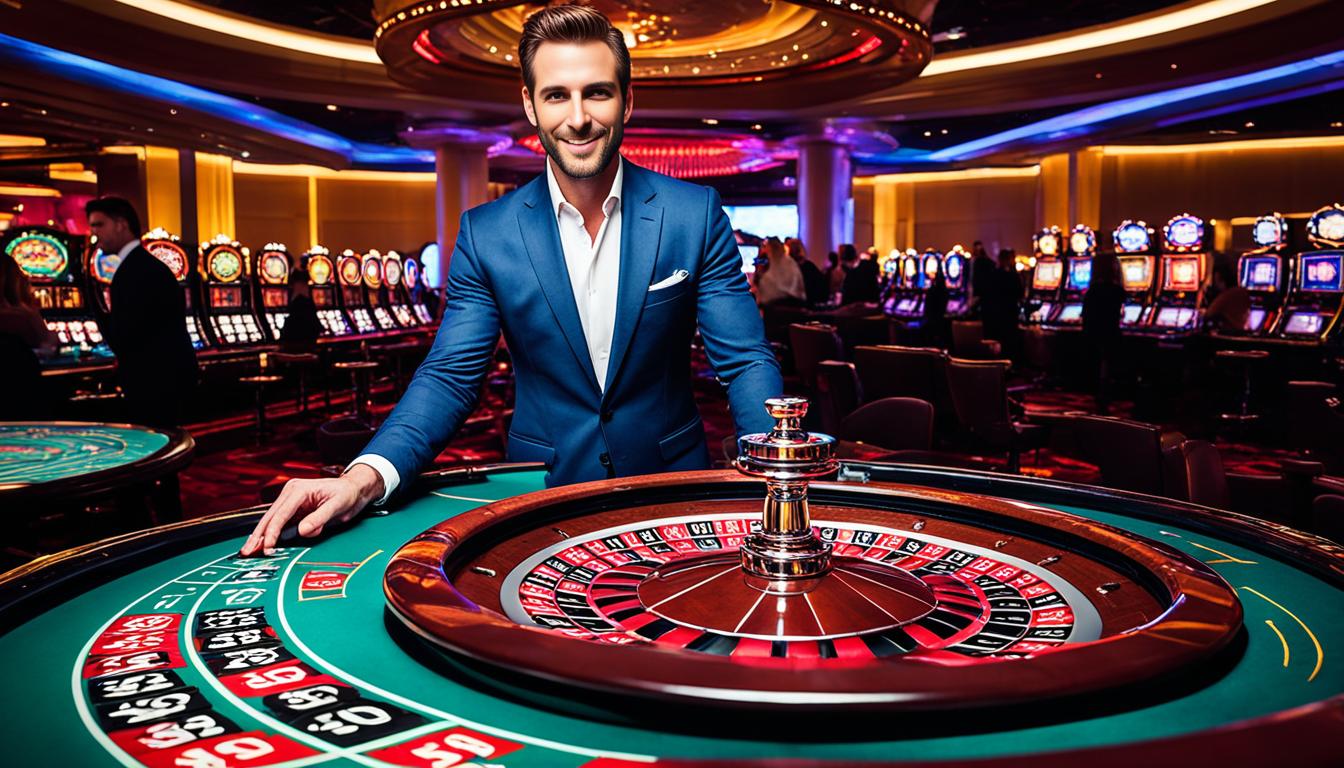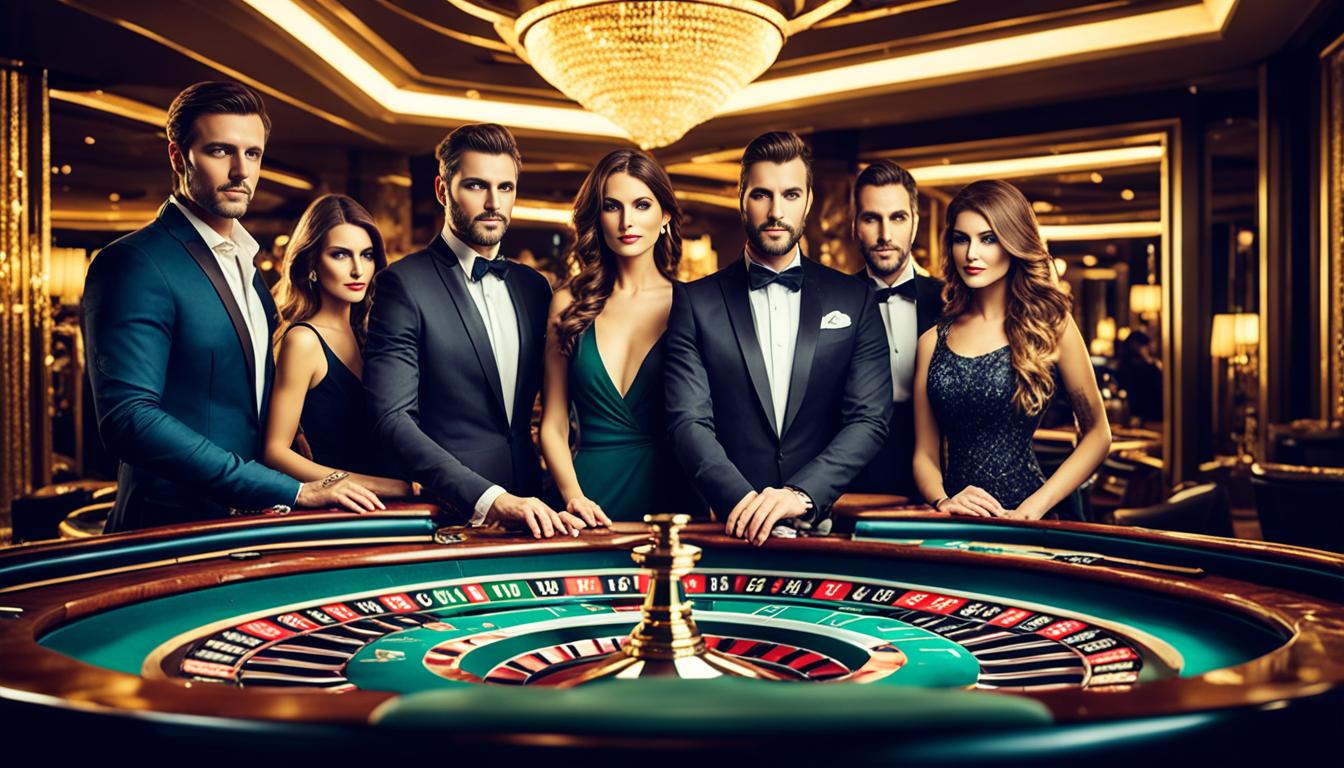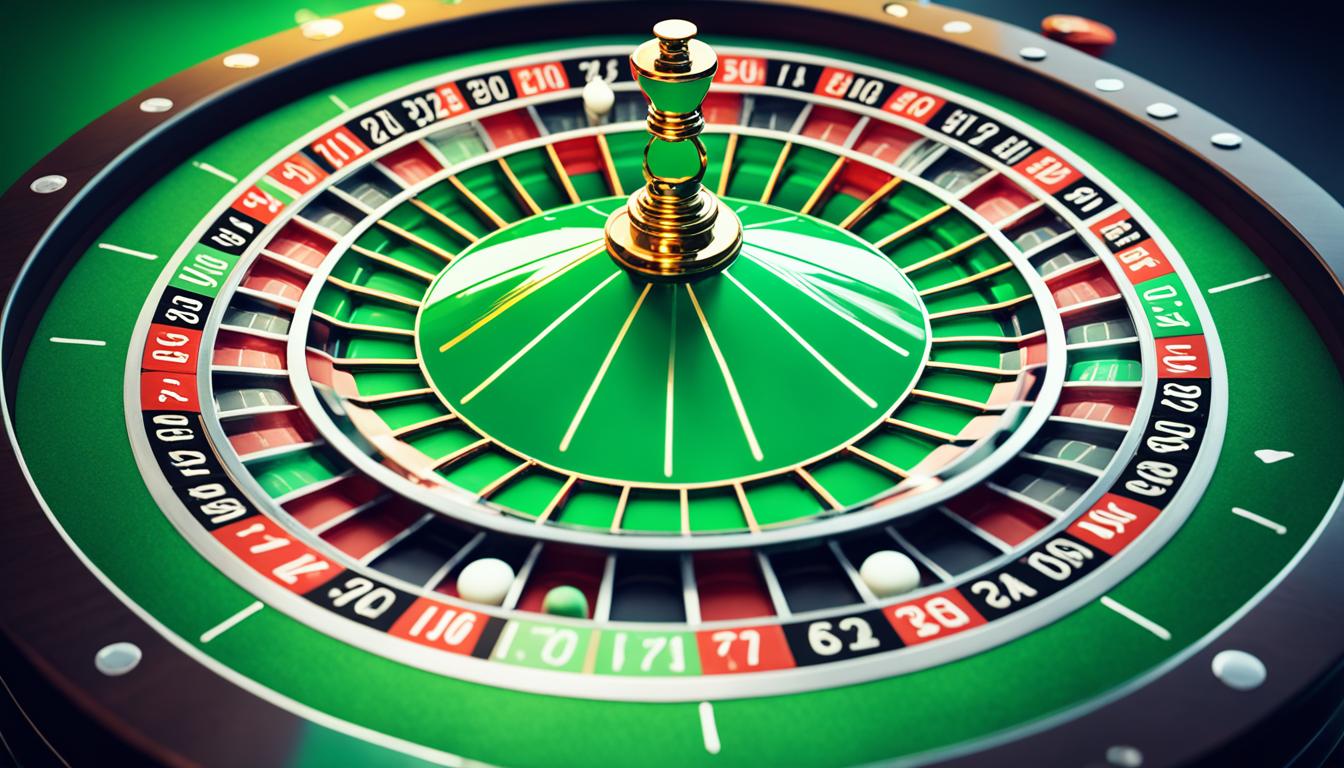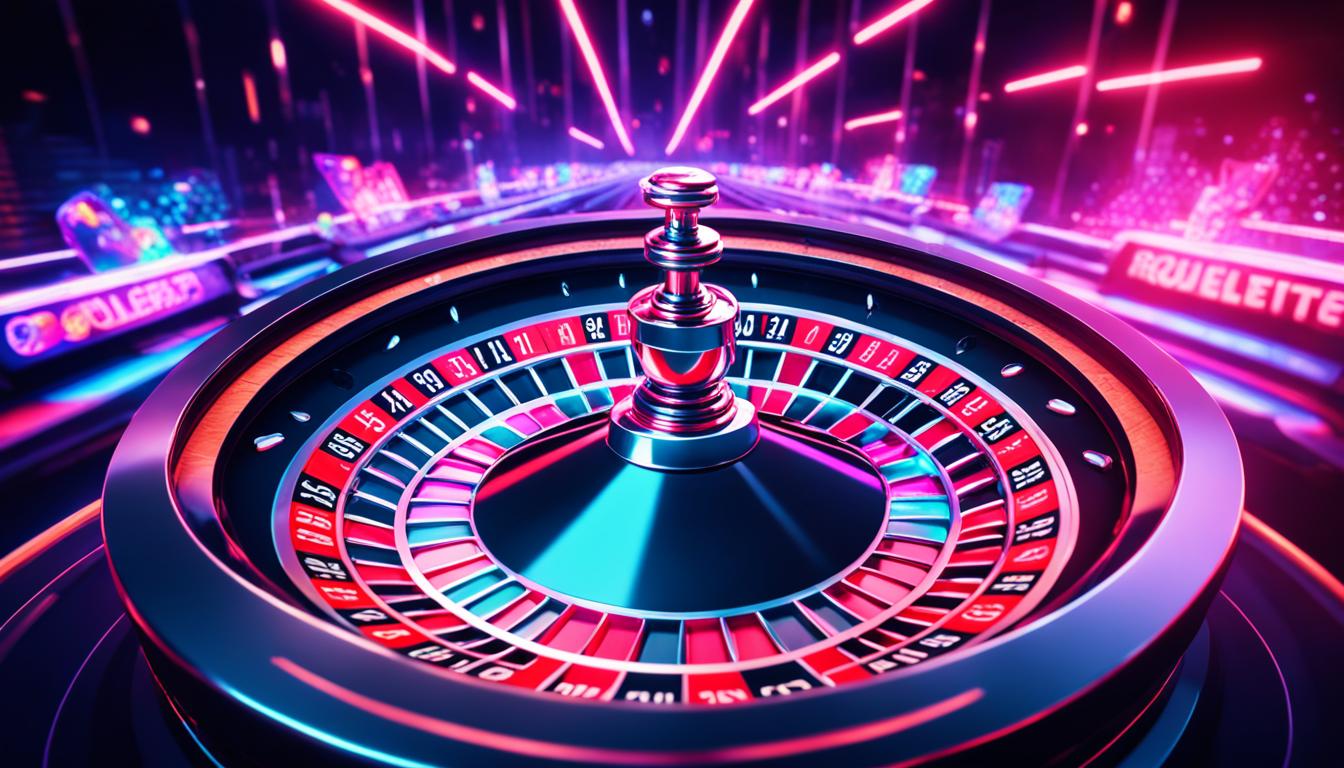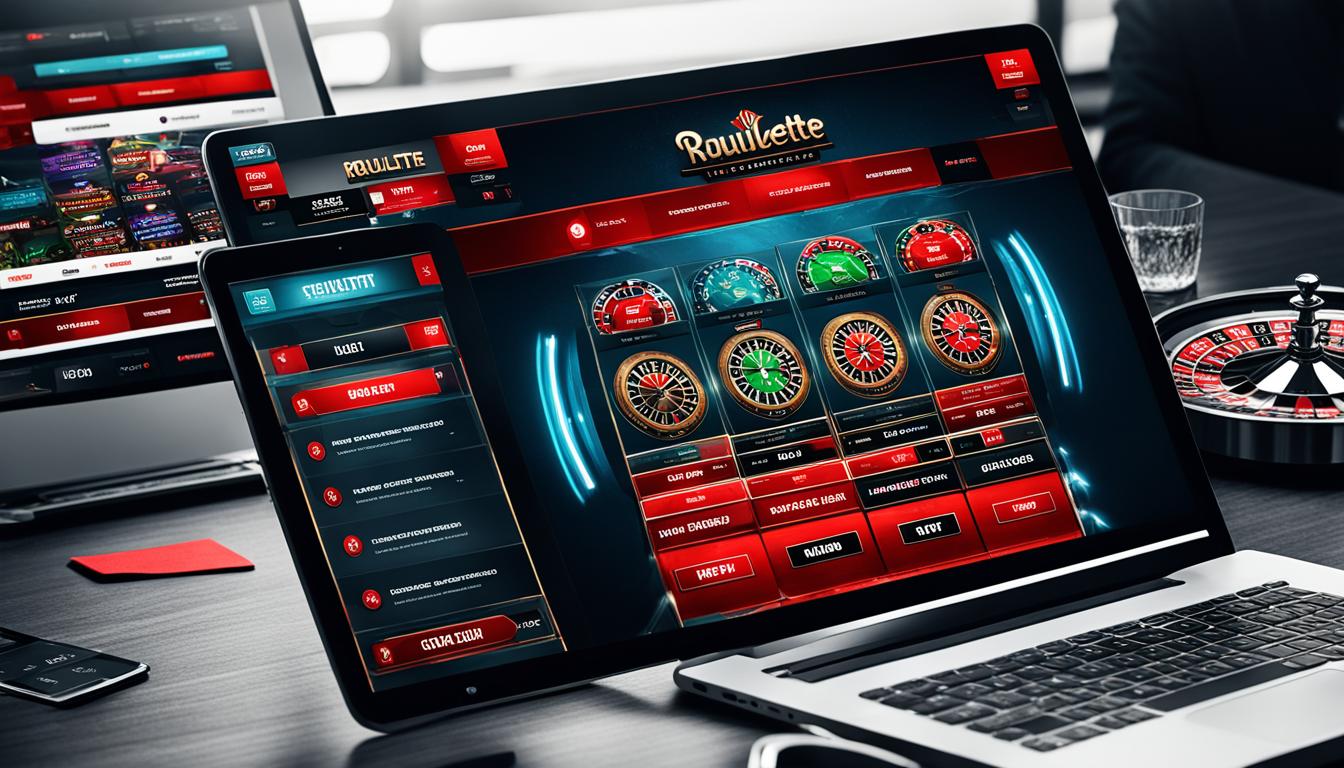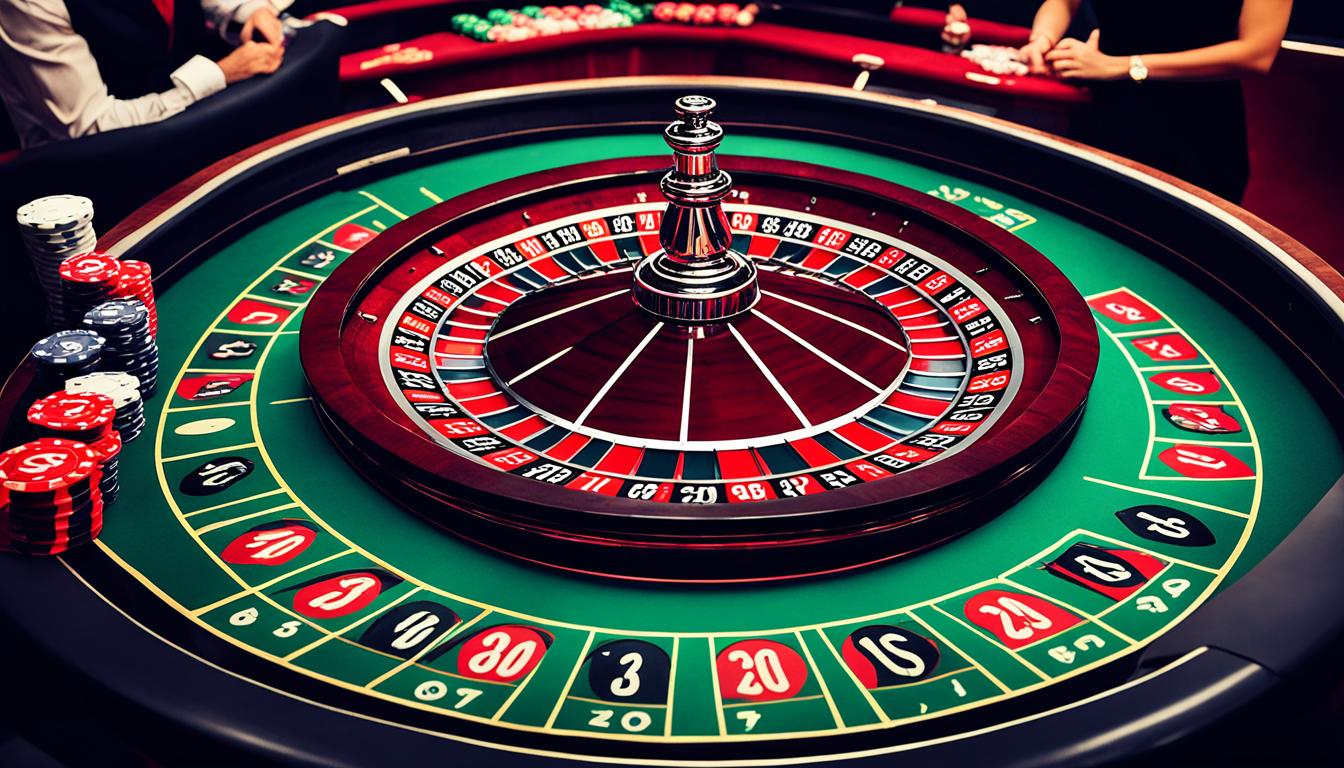Temukan Roulette Online Terbaik dan Terpercaya
Artikel ini akan membahas tentang Roulette Online Terbaik dan Terpercaya di Indonesia. Jika Anda mencari situs judi roulette online terbaik, Anda telah datang ke tempat yang tepat. Dalam artikel ini, kami akan membantu Anda menemukan situs judi roulette online terpercaya untuk pengalaman bermain yang menyenangkan dan aman.
Roulette adalah permainan kasino yang populer di seluruh dunia. Dengan bermain roulette online, Anda dapat menikmati sensasi dan keseruan permainan ini dari kenyamanan rumah Anda sendiri. Namun, penting untuk memilih situs judi roulette online terbaik agar Anda dapat menikmati permainan dengan aman dan nyaman.
Pada bagian berikutnya, kami akan membahas tentang situs judi roulette online terbaik yang dapat Anda pilih. Kami juga akan memberikan tips untuk mendaftar pada situs terpercaya yang telah terbukti memberikan pengalaman bermain yang adil dan transaksi keuangan yang lancar. Jadi, tetaplah bersama kami!
Situs Judi Roulette Online Terbaik
Pada era digital ini, banyak situs judi roulette online yang menawarkan berbagai jenis permainan. Namun, jika Anda menginginkan pengalaman bermain yang berkualitas dan aman, penting untuk memilih situs judi roulette online terbaik.
Situs judi roulette online terbaik adalah platform yang menyediakan permainan roulette dengan tampilan yang menarik, kemudahan navigasi, dan fitur-fitur terbaru. Selain itu, situs terbaik juga menjamin keamanan data pribadi para pemain.
Saat memilih situs judi roulette online terbaik, pastikan untuk melihat reputasi dan keamanan situs tersebut. Periksa apakah situs tersebut memiliki lisensi resmi, sertifikasi dari lembaga terkait, dan protokol keamanan yang kuat.
Daftar pada situs terpercaya yang telah terbukti memberikan pengalaman bermain yang adil dan transaksi keuangan yang lancar. Situs terpercaya juga akan menyediakan layanan pelanggan yang responsif, sehingga Anda dapat dengan mudah menghubungi mereka jika menghadapi masalah.
Jangan lupa untuk membaca ulasan dan testimoni dari pemain lain mengenai situs judi roulette online terbaik tersebut. Pendapat dan pengalaman mereka dapat memberikan gambaran yang lebih jelas mengenai kualitas dan keandalan situs tersebut.
Jadi, sebelum Anda memulai permainan roulette online, pastikan untuk memilih situs judi roulette online terbaik dan daftarkan diri Anda pada situs yang terpercaya. Dengan demikian, Anda dapat menikmati pengalaman bermain yang menyenangkan dan aman.
Cara Bermain Roulette Online Terbaik
Untuk meningkatkan peluang kemenangan Anda dalam bermain roulette online, penting untuk mempelajari cara bermain dengan baik dan benar. Dengan pemahaman yang tepat tentang aturan dan strategi permainan, Anda dapat mengoptimalkan hasil permainan Anda. Berikut ini adalah beberapa tips dan panduan bermain roulette online terpercaya yang dapat membantu Anda:
Tips Menang Bermain Roulette Online
- Gunakanlah strategi taruhan yang sesuai dengan gaya bermain Anda. Ada berbagai strategi taruhan dalam permainan roulette seperti Martingale, Fibonacci, atau D’Alembert. Pilihlah yang paling cocok dan terapkan dengan disiplin.
- Perhatikan peluang dan probabilitas. Pelajari tentang peluang keluarnya angka-angka atau kombinasi tertentu dalam permainan roulette. Mengetahui peluang ini dapat membantu Anda membuat keputusan taruhan yang lebih cerdas.
- Kelola modal dengan bijak. Tentukan batas taruhan dan jangan tergoda untuk bertaruh lebih dari yang Anda mampu. Selalu ingat bahwa permainan roulette, seperti permainan judi lainnya, memiliki faktor keberuntungan yang tidak dapat diprediksi sepenuhnya.
- Amati tren permainan. Perhatikan pola-pola tertentu dalam permainan roulette dan gunakan informasi tersebut untuk membuat keputusan taruhan yang lebih baik. Namun, tetap berhati-hati dan jangan berasumsi bahwa tren akan terus berlanjut.
- Berlatihlah secara gratis sebelum bermain dengan uang sungguhan. Banyak situs judi roulette online terbaik menyediakan opsi bermain gratis untuk para pemain yang ingin mengasah keterampilan mereka tanpa harus merisikokan uang mereka.
Panduan Bermain Roulette Online Terpercaya
Selain tips-tips di atas, penting juga untuk memilih situs judi roulette online terbaik dan terpercaya. Pastikan situs yang Anda pilih memiliki reputasi yang baik dan telah terbukti memberikan pengalaman bermain yang adil dan transaksi keuangan yang lancar. Lakukan riset tentang situs-situs yang tersedia dan baca ulasan dari pemain lain sebelum memutuskan untuk mendaftar.
Untuk panduan bermain roulette online yang lebih detail, Anda juga dapat memanfaatkan sumber daya online seperti tutorial video, artikel, atau forum diskusi. Semakin banyak pengetahuan yang Anda miliki tentang permainan ini, semakin baik Anda dapat mengembangkan strategi yang efektif dan meningkatkan peluang kemenangan Anda.
Jadi, jangan ragu untuk mempelajari cara bermain roulette online dengan baik dan benar. Dapatkan tips dan panduan bermain roulette online terpercaya untuk meningkatkan kemampuan Anda dalam permainan ini. Dengan usaha dan latihan yang konsisten, Anda dapat menjadi pemain roulette online yang sukses dan meraih kemenangan yang menguntungkan.
Strategi Main Roulette Online Terbaik
Untuk meningkatkan peluang kemenangan Anda dalam permainan roulette online, penting untuk menerapkan strategi main yang terbaik. Dengan memahami berbagai strategi taruhan dan pengelolaan modal, Anda dapat meraih keuntungan maksimal dalam permainan ini.
Salah satu strategi yang populer dalam roulette online adalah strategi Martingale. Strategi ini melibatkan peningkatan taruhan setelah setiap kerugian, dengan tujuan untuk mengembalikan modal dan mendapatkan keuntungan. Namun, perlu diingat bahwa strategi ini memiliki risiko yang tinggi, dan Anda perlu mempertimbangkan batas taruhan di situs yang Anda mainkan.
Selain itu, strategi Labouchere atau sistem pembatalan juga bisa menjadi pilihan. Dalam strategi ini, Anda akan membuat daftar angka yang mewakili jumlah taruhan. Setiap kali Anda menang, Anda akan menghapus dua angka terakhir dari daftar. Namun, jika Anda kalah, Anda akan menambahkan jumlah taruhan yang baru ke daftar. Strategi ini membutuhkan manajemen modal yang baik dan kesabaran untuk diterapkan dengan efektif.
Memahami Peluang dan Probabilitas
Untuk meningkatkan strategi main roulette online Anda, penting untuk memahami peluang dan probabilitas dalam permainan ini. Roulette online menggunakan roda dengan angka-angka 0 hingga 36, dan peluang munculnya setiap angka dapat berbeda-beda.
Sebagai contoh, dalam roulette Eropa, terdapat angka 0 hingga 36, dengan total 37 angka. Peluang munculnya angka tunggal adalah 1 banding 37. Dengan memahami peluang ini, Anda dapat mengatur strategi taruhan Anda dan mengoptimalkan hasil permainan.
Tentu saja, terapkan strategi main roulette online terbaik juga dapat melibatkan penggunaan sistem taruhan yang lebih kompleks seperti Fibonacci atau D’Alembert. Namun, penting untuk menguji strategi ini dengan hati-hati dan mengatur batas taruhan yang sesuai.
Dengan mempelajari dan menerapkan strategi main roulette online yang terbaik, Anda dapat meningkatkan kesempatan kemenangan dan meraih keuntungan maksimal dalam permainan ini. Selalu ingat untuk bertaruh dengan bijak dan tetap mengontrol emosi Anda saat bermain.
Promo Bonus Roulette Online Terpercaya
Manfaatkan promo bonus yang ditawarkan oleh agen roulette online terbaik untuk meningkatkan modal bermain Anda. Ketika bermain roulette online di situs terpercaya, Anda dapat memanfaatkan berbagai jenis promo bonus yang dapat memberikan keuntungan ekstra bagi Anda.
Selain memperoleh keuntungan ekstra, promo bonus juga dapat menjadi pengganda modal Anda. Beberapa jenis promo bonus yang sering ditawarkan oleh agen roulette online terbaik antara lain bonus deposit, bonus referral, cashback, dan masih banyak lagi. Dengan memanfaatkan promo bonus ini, Anda dapat meningkatkan peluang untuk meraih keuntungan lebih besar saat bermain roulette online.
Namun, sebelum menggunakan promo bonus, pastikan Anda memahami syarat dan ketentuan yang berlaku. Setiap promo bonus memiliki persyaratan yang perlu dipenuhi, seperti minimal deposit, batas waktu penggunaan, atau persyaratan taruhan tertentu. Pastikan Anda membaca dan memahami dengan baik syarat dan ketentuan promo bonus yang ditawarkan agar Anda dapat mengoptimalkan keuntungan yang diperoleh dari pemakaian promo bonus tersebut.
Jika Anda ingin mendapatkan pengalaman bermain roulette online yang lebih menguntungkan, lihatlah penawaran promo bonus dari agen roulette online terbaik dan pastikan Anda memilih situs terpercaya untuk memainkannya. Jangan lewatkan kesempatan untuk meningkatkan modal bermain dan meraih kemenangan lebih banyak dengan memanfaatkan promo bonus yang ditawarkan.
